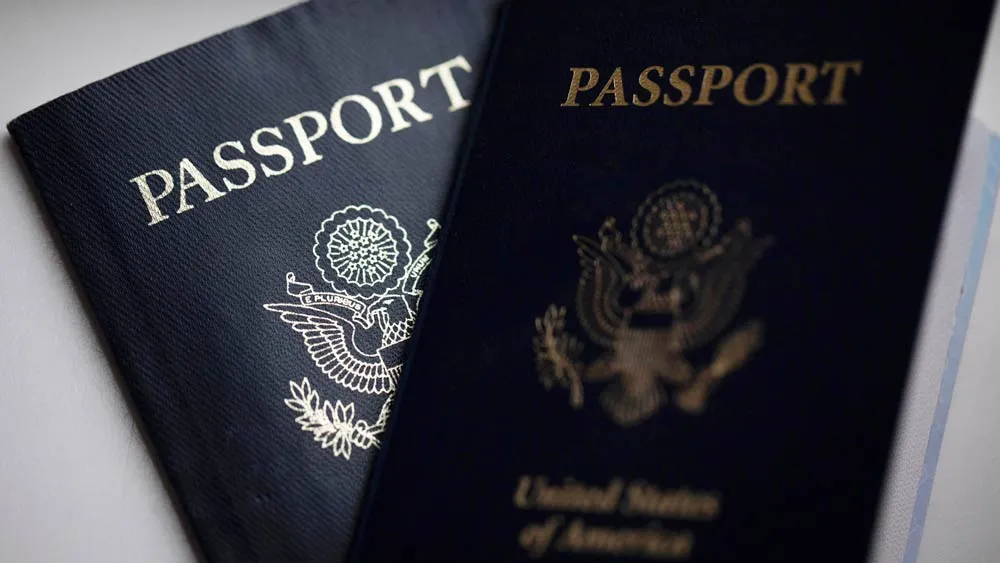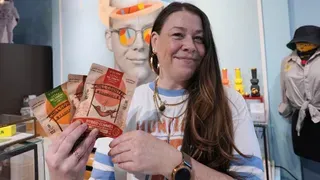December 3, 2013
Black Gay Activism and the Fight Against AIDS
Marcus Scott READ TIME: 8 MIN.
On Nov. 19, as part of its "Ordinary People" series -- a program focused on black LGBTQ books, films and politics -- the Schomburg Center for Research in Black Culture held a panel discussion with LGBTQ leaders to discuss services for communities of color and to analyze the factors impacting HIV/AIDS prevention and resources. But what at first appeared to be an exchange on the HIV/AIDS virus became a dialog on the historical, political, spiritual and socioeconomic ramifications that followed.
HIV first appeared in the early 1980s, and now, nearly 35 million people across the world are living with it, according to the Joint United Nations Programme on HIV/AIDS. In the U.S., more than 1.1 million people are HIV positive and nearly 50,000 contract the virus each year. Queer people of color -- especially African-Americans and Latino men -- have been disproportionately impacted by the HIV/AIDS pandemic and have among the highest infection rates.
In his opening remarks, moderator Dr. Herukhuti Amen, born Hameed Sharif Williams, talked about the ties between social and environmental conditions and our immune systems, and how centuries of Black oppression have affected that community.
"What might a radical, transgressive and revolutionary approach to our health look like if we included among the markers of the AIDS destination the experience of white supremacy, economic exploitation, heterosexism, patriarchy, imperialism and colonialism? Perhaps it might even change the word 'acquired' in the AIDS destination to the word 'attacked,' as in Attacked Immunity Deficiency Syndrome," said Herukhuti, a clinical sociologist, cultural studies scholar, and neo-traditional African shaman focused on sexual, cultural, and spiritual themes within the African Diaspora.
These opening remarks sparked discussion between the five panel speakers. Each began his or her life's work in advocacy at different ends of the spectrum: Sean Coleman, the Executive Director of Destination Tomorrow, a South Bronx grassroots agency that provides services to youth 13-25, lost various friends in the city's ball scene.
Hayat Hyatt, a Brooklyn-based playwright currently doing research for his next film "Villanelle," got his start after he came to the conclusion that his play about a family dealing with the virus felt inorganic. Bali White is a transwoman getting her PhD in African Studies targets LGBT youth, undocumented workers and transgendered people by coordinating STD prevention.
And George Bellinger Jr., an outreach director and consultant in advocacy since 1982, abandoned a career in dance after losing near 20 friends; he thought the HIV virus would be over in two years.
"I remember Margaret Heckler, Secretary of Health under the Reagan Administration, said AIDS would last two years. That it would be over. So, I thought, 'I'll go away and come back.' She lied," Bellinger quipped.
With numbers of new HIV infections rising among young men of color, many have lost faith. Rev. Christopher Jones, a faith leader and the acting Program Coordinator for the SAGE Harlem Center, understands probably more than his peers. Coming into advocacy through "quilts, fear and anticipation," he had to lie to his pastor about his budding sexuality in his formative years to stay with the church's youth ministry.
HIV-positive, Jones admits that his biggest success was not only his will to live, but also that he could have a conversation broader than the subject of the virus. He said faith is the reason he is alive today. But the elephant in the room is the complacency and normalization of HIV in a post-AZT America. We've lost something, said Jones.
"We've lost a sense of urgency because we've normalized it," Jones said on panel. "Particularly by the decategorization of the virus from a terminal illness to a chronic illness. In some people's eyes, that is a move of success that shows we have come a long way from the earlier days of HIV/AIDS. However, while we pay more attention to the designation of terminal than chronic, it is still problematic that there is a rampant illness among us."
Jones was disturbed by the fact that HIV was so normalized among people of color in the U.S., accepted as something that we can do little to prevent or stop from taking over our bodies, family members and communities.
"This is not to discount the work being done to help people live healthier lives and get into medical care as early as possible, but I feel we have been acculturated into a learned sense of helplessness when it comes to medical matters," said Jones. "HIV is so normalized that we do not see the need to talk about it in public spaces as much anymore, which is ridiculous. Just because people are not dying physical deaths at the same rates experienced in the 1980s and early 1990s does not negate the fact that people are experiencing, countless times over, social, mental and spiritual deaths around this virus daily in ways we could probably never fully quantify or qualify."
Similarly, Hyatt said the public needs to be concerned with the disposability of black bodies, not only when it comes to HIV, but as regards the imprisonment of young men, and lack of resources for them.
"Many of the laws and policies that led to increased HIV rates within the black community in the 1980s are still present today. The drug laws that support the imprisonment of young black men; the fact that most federal prisons don't allow condoms in their facilities; the ban on needle exchange programs that have proven successful at cutting infection rates," said Hyatt, who represents the young queer black men who have a 1-in-4 chance of being infected by age 25.
White looked at the epidemic's impact among the transgendered community, noting that many transwomen didn't believe that they could get infected by HIV. She also bemoaned the fact that LGBT youth were given the message that they would get treatment and a home if they were infected with HIV/AIDS, but not if they were just living on the streets. She relayed the crux of a recent conversation with a young transwoman:
"You can't go to Housing Works because you have to be HIV-positive," said White. "If you go on that pier right now, you will see so many homeless youth, trans youth, and they are scared because they feel like someone is going to come for them."
Coleman also expressed his dedication to HIV among homeless LGBT youth, saying that many caught the virus after engaging in survival sex down at the boardwalk. They also suffered from the stigma that blamed them both for their youth, being HIV and being LGBT.
"I'm a firm believer in testing not being the answer, that testing exclusively is not the answer. Most of these agencies go out and test, test, test -- I'm not going to test a young person who may not have a place to sleep or eat and will do whatever he needs to do for his basic survival skills," said Coleman, who believes that testing is only part of the solution for an epidemic that is mammoth in scope. More preventative measures should be in place to keep at-risk LGBT youth off the streets.
Fighting to End HIV Among People of Color
NYC Black Pride Executive Director Lee Soulja-Simmons was among those in the audience at the Schomburg Center that day. He said that part of the problem behind the rising rates of HIV is that the past motivations people of color maintained to fight for Equal and Civil rights were gone.
"It just seems that WE have become sedated and complacent," said Soulja-Simmons in an interview with EDGE. "When the CDC decided to move away from prevention as a way to combat HIV/AIDS and focus solely on treatment, we should have been outraged when that action directly affects the African-American community the most. We need a plan from the CDC that incorporates both prevention methods and treatment plans in partnership. Not one versus the other."
Soulja-Simmons pointed to the formation in the late '80s and early '90s by white men of ACT UP!, saying that they made sure the government heard them loud and clear on fulfilling their needs for medical attention and founding for support services.
"It puzzles me why you don't see the same response from African Americans now that the pandemic is affecting us six times more than our counterparts," said Soulja-Simmons.
Like Soulja-Simmons, Coleman noted that had there been anyone else at risk or had it been a different cause (namely gay marriage) African-Americans would be marching in the streets. Bellinger expressed that after 30 years Black people were now talking about their HIV statuses. This is a success, but of course, we have a long way to go.
"It's time for mandatory testing at all medical facilities and hospitals in this country. This means that whenever a person goes to a doctor visit or the ER and has to give blood that blood should automatically be tested for HIV/AIDS as a standard test," said Soulja-Simmons. "The same way that we mandate that all children be vaccinated before being allowed to start or attend school, it's time we mandate testing in all medical facilities. This will help to breakdown the stigma within the black and Latin communities."
Universal testing and treatment regardless of race, color, age, creed or sexual orientation would go far toward reducing stigma, said Soulja-Simmons.
"This disease affects everyone therefore everyone should be put on the same platform," he said. "Mandatory medical facility testing would also help to protect each individual's privacy as your medical records are private. This is a much better idea than those home testing kits."
For more information, visit www.nypl.org/locations/schomburg?




